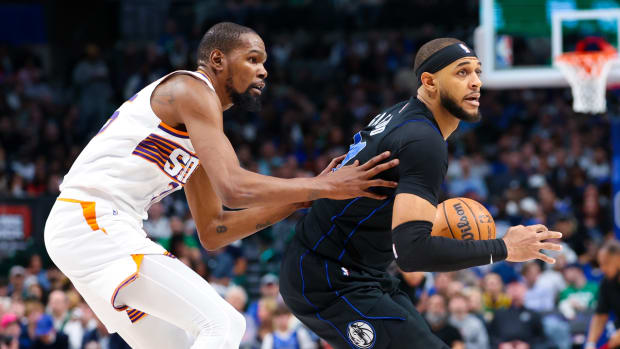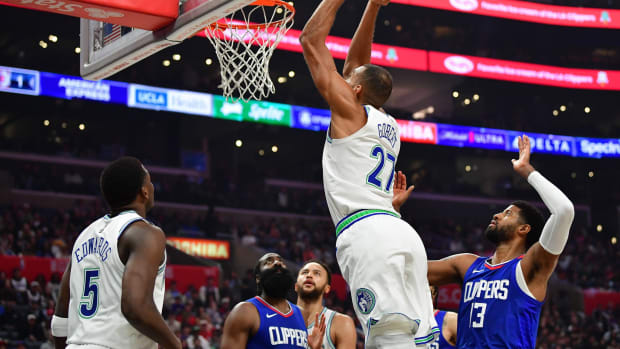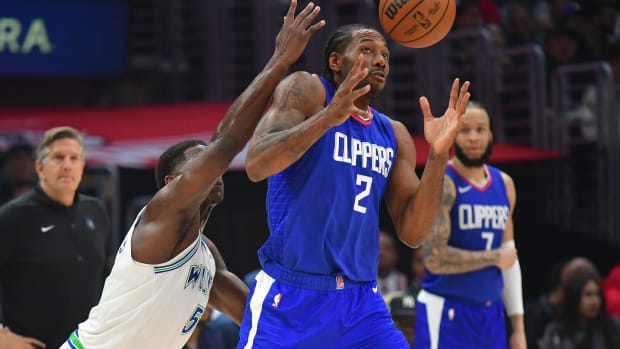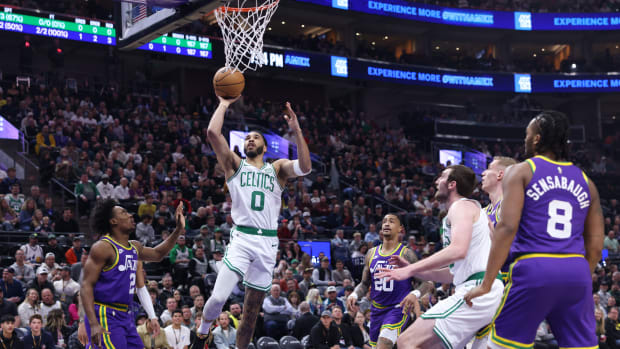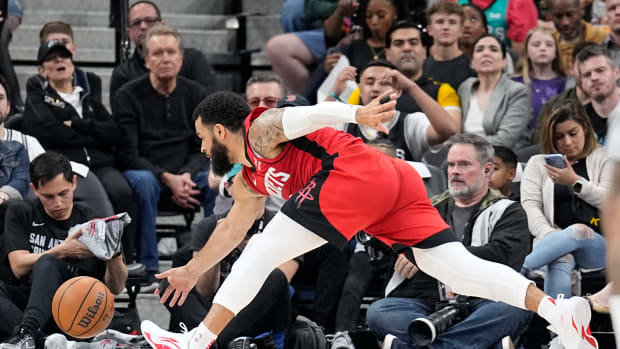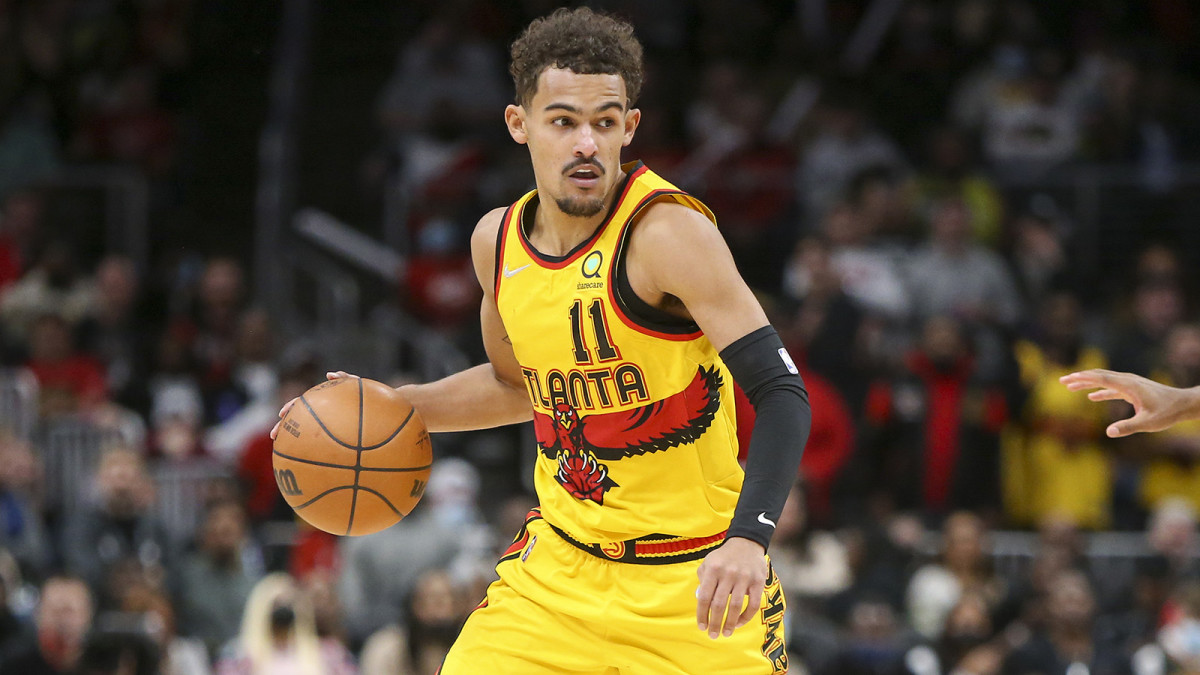
Trae Young’s Game Is More Dangerous Than Ever
It’s fair to be disenchanted with the Hawks. They’re 13–12 with a bad defense and myriad health issues. But in the grand scheme of what Atlanta can still become this season, none of that should overshadow Trae Young, an increasingly elastic superstar whose muted evolution makes it easy to feel optimistic about its eventual turnaround.
For the first time in four years, Young is the overwhelming deep threat his reputation has long purported him to be, averaging a career-high six pull-up threes per game while hitting 39.3% of them. If both hold they’d be personal highs and inject adrenaline into a career that’s already enjoying a dizzy ascent. (A glance at the pull-up three leader board reveals that nobody except Steph Curry can match Young’s volume and accuracy.)
Among point guards on noncorner threes, he’s jumped from the 25th percentile to the 92nd, drilling more than 40% of them for the first time. His average three-point distance is also deeper than it was last year (28.11 feet), which is farther from the rim than anybody who’s taken at least 30 this season. (It’s also a career high.) We’re either nearing or at the point where defenses can’t afford to ever duck under a high screen, which would take yet another response off the table against a delirious talent who does as good a job confounding opposing game plans as anybody in basketball.
Young’s spiking effective field goal percentage (and Atlanta’s No. 2 ranked offense) is largely thanks to that boost from downtown, but there's a more subtle shift happening, too—one that shouldn’t surprise anyone who caught Atlanta’s media day, when a reporter asked Young if he worked on any one specific area during the summer.
“I know people don’t like talking about the midrange game, but for me, I don’t think I shoot that enough and … being able to add that and try to perfect that was something I definitely focused on a lot this offseason,” Young responded. “[I’m] just trying to make it as difficult as possible for someone to guard me.”
That epiphany probably never materializes without last year’s playoff run, when more stifling schemes tested Young with mixed results. During the postseason 11 players attempted more midrange jumpers than his 50; only two were more accurate than the 50% he finished at: Kevin Durant and Chris Paul. But Young’s work here wasn’t loud enough to earn much attention. His biggest moments came after a floater or long ball, while his contagious confidence and intuitive playmaking (guess who currently leads the NBA in assist rate) were more synonymous with Atlanta’s success.
COVER STORY: Trae Young is the Hawks torchbearer
But the midrange can’t be overlooked when explaining why Young might be more dangerous than ever despite his on-the-fly adjustment to the league’s new definition of a personal foul. He’s averaging four fewer free throws per 100 possessions than last year but still ranks top five in points per game. During his first two seasons Young barely acknowledged the midrange, and last year he took only 2.1 shots from that area per game. (45.2% went in.) Right now he’s up to 4.0 per game and making a silly 54.5% of them. For reference as to how ridiculous this is: 1) the league average on midrange shots this year is 40.7%, 2) Chris Paul—the third-most accurate midrange shooter among all players who’ve logged at least 1,000 field goal attempts in the past 20 years—is taking 4.3 per game and making 54.9% of them.
At the risk of getting too granular, there are 35 players who’ve taken at least 35 shots between 15 and 19 feet, according to NBA.com. Only LaMarcus Aldridge is more accurate than Young. The percentage of Young’s points that comes from the midrange has spiked to 16.4%, which is more than double what it was last year and nearly triple his rookie season.
As Young explained at his preseason press conference, there’s obvious value embracing the midrange in a league that still prioritizes schemes that take away the arc and restricted area. Be great from an area that NBA defenses are still “willing” to concede and you can walk on water.
For the on-court maturation of Young’s skill set, the varying ways he attacks now feel more like a first step than a finishing touch, and yet another reason to be bullish about how his prime will look. Young is lethal snaking middle or slaloming downhill off a ball screen toward a dropping giant. As seen below versus Joel Embiid and Rudy Gobert, instead of pressing his luck for a tough floater, Young keeps his body out of harm’s way and gets the ball up before his own man can recover to bother the shot.
The fully developed pick-and-roll chemistry he has with Clint Capela generates a challenge on par with driving a golf ball that keeps rolling off the tee. Whenever his man ducks under, Capela knows to flip the pick and free Young up in space that’s more comfortable than before.
Young is cutthroat on an island, creating space against wary defenders who try not to press up and allow a blowby. This will matter when defenses switch on all of his pick-and-rolls in the playoffs.
The midrange is important but doesn’t ever need to be Young’s first option. He has years of jackrabbit quickness in legs that currently frolic beside a cornucopia of complementary teammates. Lobs to Capela and John Collins, pinpoint kick-outs to Kevin Huerter or Bogdan Bogdanović and his own fireworks displays lit 30 feet from the basket all keep 29 head coaches up at night. But long twos can stabilize, torture and make Young untouchable.
Watch NBA games online all season long with fuboTV: Start with a 7-day free trial!
Great offensive players are problem-solvers. Over time they transform whatever the defense believes to be a weakness into a devastating trump card. Most opponents probably still exhale whenever Young pulls up from the right elbow or hoists an 18-foot stepback at the top of the key. Instead, maybe they should hold their breath.
More NBA Coverage:
• NBA Mailbag: Damian Lillard's Future With the Blazers
• NBA Power Rankings: Bucks, Bulls Rise in the East
• NBA Trade Ideas: Can the Warriors Land Sabonis?
• The End of the Neil Olshey Era Leaves Blazers in a State of Disarray
Sports Illustrated may receive compensation for some links to products and services on this website.






























